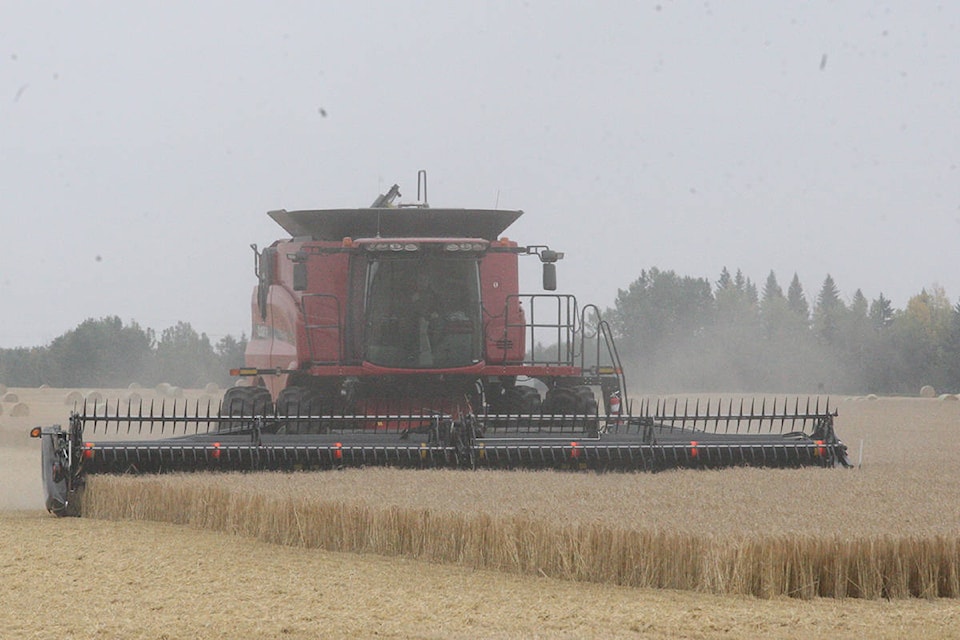A seemingly non-contentious rezoning application has pushed Ponoka County toward further discussion about future development and the need to diversify its assessment base.
At its council meeting May 12, a nearly 13 acre parcel along the west side of the Battle River Valley on Township Road 432, just east of Beacon Road (Range Road 265), received final approval — with Coun. Mark Matejka the only vote against — for a rezoning request from agriculture to country residential.
The lead up to the final vote sparked talk of what the county needs to do in regards to better planning and diversifying its tax base.
Coun. Doug Weir waved the green flag on the issue by putting forth the idea of looking at doing an area structure plan (ASP).
“I would like to see us, down the road look at an ASP on that side of the river,” he said.
“It may be not the right time or feasible now, but I would like to get it on the record as something to look at so we know what we are doing and so councils down the road have an idea or direction of how to do things.”
Weir’s idea is to have that plan done within the next 18 to 24 months, to create some certainty for landowners and future county councils.
CAO Charlie Cutforth added administration has talked about that idea and that it would, ideally, be appropriate. Although, he wasn’t too keen on opening up that can of worms so soon after the battle over the Northwest ASP on the other side of the river.
“The ASP on the east side protects existing farming activity as its primary purpose, but it also identifies the river valley for potential multi-lot subdivision. The west side (of the river) already has development north from Hwy. 53, which is consistent with plans to date,” Cutforth said.
“It isn’t too late to consider an asp for the whole area up to (secondary highway) 611 and I would suggest that is the right way to go.”
However, he added that four small residential lots won’t generate a lot of revenue and that the county has to start planning for and looking at development that isn’t connected to the energy sector.
“We are far too reliant on (energy development). We need to look at diversifying and the only real opportunities currently are some continued development where it is appropriate and doesn’t impact farm operations,” he said.
“Ideally, that would be highway commercial and industrial. We have to look at what our advantages are and how that diversification can occur. Those are our options.”
Reeve Paul McLauchlin agreed with Weir and Cutforth that a longer term, big picture plan is necessary.
“To that properly, we can’t keep doing (rezoning and subdivisions) as a one-off. We do need to increase our population and look at different tax bases as well as supporting agriculture,” he said.
“It’s a tricky balancing act, but that’s a better legacy to leave then doing one-offs that are just going to get more complex.”
Ponoka County, like others according to Cutforth, won’t be viable unless they generate new development and diversify.
“Seventy per cent of cost to run the county comes from the energy sector, just 1.6 per cent from agriculture. So, if we want to protect 100 per cent of county for agricultural purposes, we are not viable and can’t maintain a road,” he told council.
“That’s harsh but true. The only potential for this — and all counties — is to have some balance to replace the oil and gas revenue. Even the grants we get are based on population and the farm community is rapidly declining. We need some other kind of support.”
Further complicating the issue is the province’s reassessment plan for the energy sector, which McLauchlin expects to see by the end of June, which is expected to slash municipal revenue even further. Initial estimates of a 10 per cent drop, about $1.5 million for Ponoka County, are believed to be ultra-conservative.
“If we have to look at spending, then we have to look at the level of service we provide. Even doubling residential taxes gets us an extra $2.3 million, not even close to the $13 to $15 million we get from the energy sector,” Cutforth said.
Weir agrees the county doesn’t have an an expenditure problem.
“We have a revenue problem. I’ve been saying that for two years,” said Weir.
“We’ve got to find ways to generate money so we can be viable and continue to do what we do — maintain roads provide services to the community.
Unfortunately, Matejka believes the only to do it is through a change in how taxes are charged on land.
“Rezoning or subdividing doesn’t guarantee us more. Unless we change and say if you subdivide you start paying a different rate, since now it doesn’t add anything until it is sold or built on,” he stated.
In the end, council left the issue of any planning to a future meeting.
